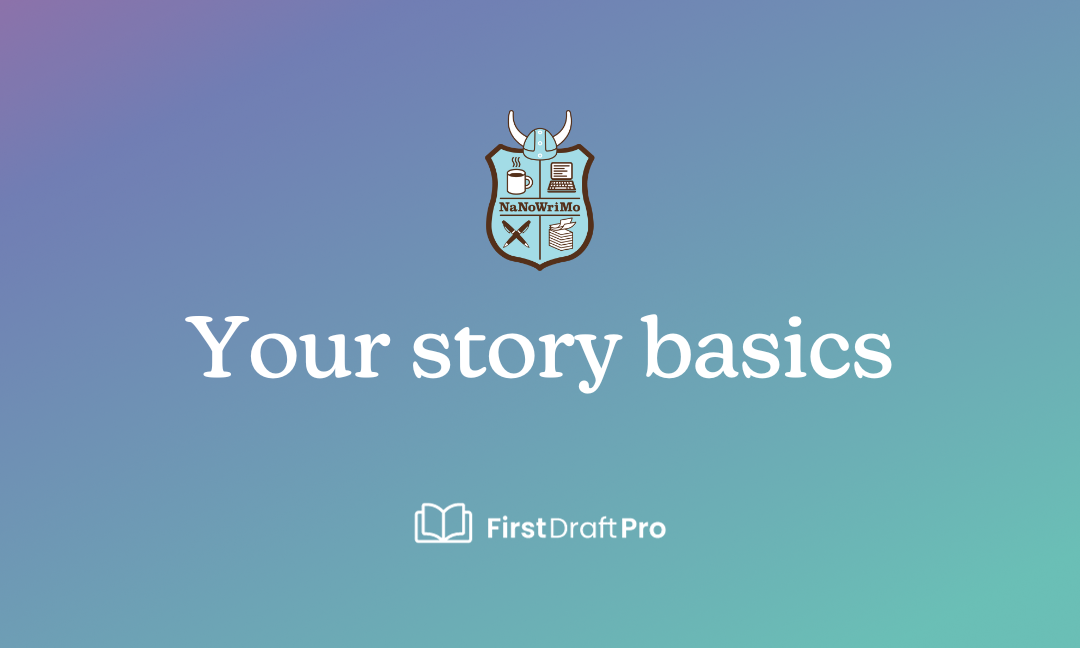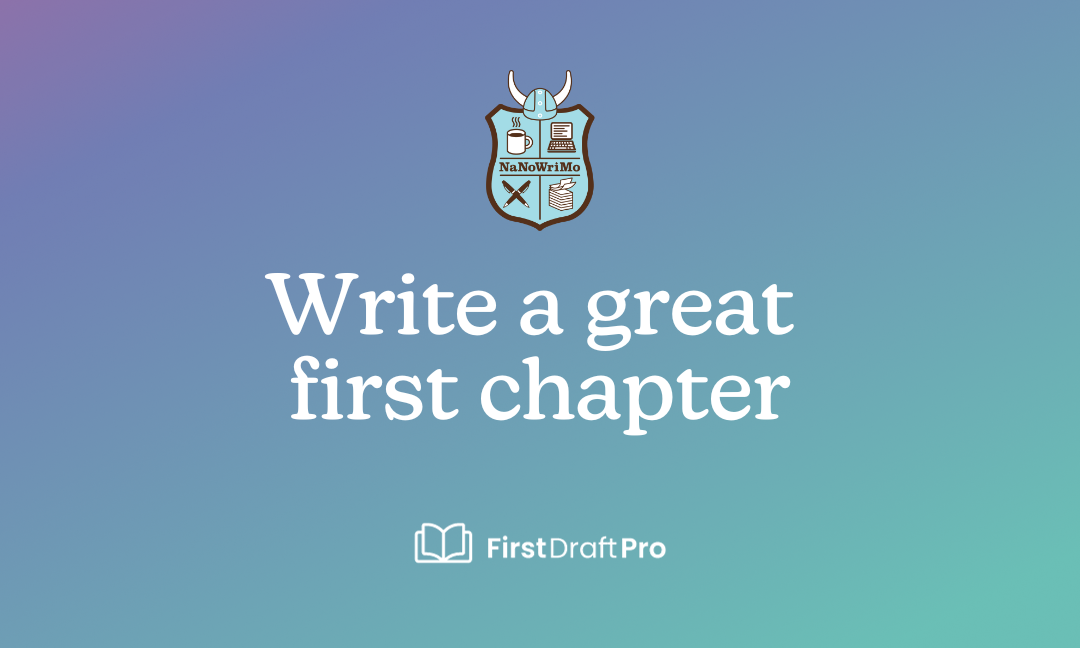Establish your story basics

There are 4 weeks until Nanowrimo, which means it's a great time to start thinking about your story idea and figuring out a rough outline. We've broken down the classic 3-act story structure across a 50 000 Nanowrimo novel, and created a step-by-step guide of what you should write each day. See our 8-day plan to get through Act 1, 14-day plan to get through Act 2, and 8-day plan to get through Act 3.
Whether you're planning to follow our daily writing plan above, or pants your way through (you do you), it can be really helpful to establish some story basics to act as your homing signal when you get stuck in the twists and turns of your plot later on.
To establish your story basics, you'll need to make some decisions about:
- Basic plot planning
- Basic character planning
- Stylistic choices
Basic plot planning
Premise
Summarise the main plot and primary conflict of your story in just one or two sentences.
Here's a guide: A [description of protagonist] wants to [protagonist's external goal], but [crisis your protagonist finds themself in].
- A young queen wants to wrest control of her kingdom from a regent who is serving their own interests, but the sinister ministrations of the small council pale into insignificance when a dark power awakens beneath the castle and she must discover its connection to the threat of war looming on the horizon.
- An obsessive librarian wants nothing more than to apprehend a library patron who writes marginalia in library books. But, when a secret in the depths of the library archive threatens the very existence of the library itself, the marginalian might just be the only one who can help.
Synopsis
Write a summary of your plot covering the beginning, middle, and end. It doesn't need to be long, but it must cover all three parts.
Story theme
What is the central question you are trying to answer? This will probably be closely linked to your protagonist's internal goal or be central to a flaw in the way they see the world. It can be really general. Here are some ideas:
- Are people inherently evil?
- Does absolute power corrupt absolutely?
- Is love enough?
Pick your genre/type of story
Are you writing an action-adventure? A sci-fi? A fantasy-heist-murder-mystery?
The genre of your story will affect the obligatory scenes you need to include in your story, so it's important for you to consider this upfront. Obligatory scenes are types of scenes that are common across certain types of stories:
- In all love stories, there must be a "meet cute" scene.
- In every action story, there is a scene where the hero is at the mercy of the villain. Think of the James Bond chair scene, guys. You know the chair scene.
- In every murder mystery, there's a scene where a body is discovered, and then a song by The Who plays (wait, what?)
Basic character planning
Basic overview of important characters
Create a list of your main characters. It doesn't need to be a comprehensive list, you can add characters as you go, as well.
You also don't need to know everything about them, yet. For now, jot down their names (or roles, if they don't have good names yet), and put down what you know about their role in the story.
It can be really tempting to start thinking about what they look like, and what music they listen to, and what personality type they have, but none of this actually matters right now. The only thing that matters is what role they play in the story (ie: how do they either hinder or help your protagonist?)
Stylistic choices
POV
Whose point of view will you tell the story from? Will you write in the first person or the third person?
Story structure
If this is your first Nanowrimo, we recommend following the three-act story structure. This is the one you've probably encountered the most, and as a result, your story-brain is already an expert at it.
If you do choose the three-act structure, use our guides for writing Act 1, Act 2, and Act 3. They will make your life much easier.
Tone, style, setting
Trust your gut when it comes to your “voice”. You don’t really need to decide what your voice is, you have one already. Just notice it. Tweak it more towards what you like. It’s all personal preference.
Make basic decisions about the tone, style, and setting of your story upfront, but don't spend too much time on this. It will come out as you write. Tone, style, and setting must serve the story, so let the story guide the choices you make as you go.
Oh, and hey: if you're looking for a place to store all this information, we'd like to make some less-than-subtle hints about First Draft Pro's pretty awesome note-taking features 🤗








